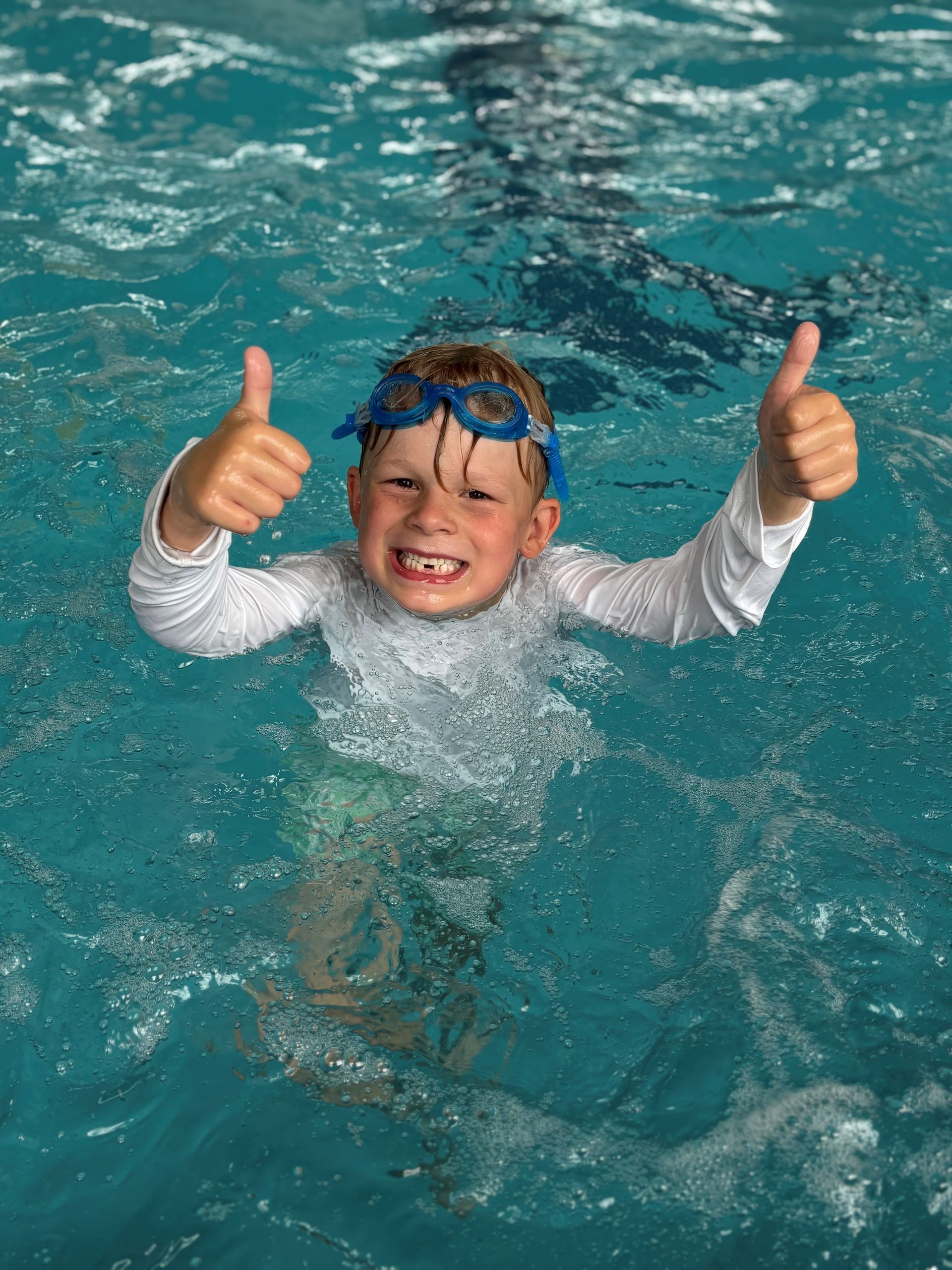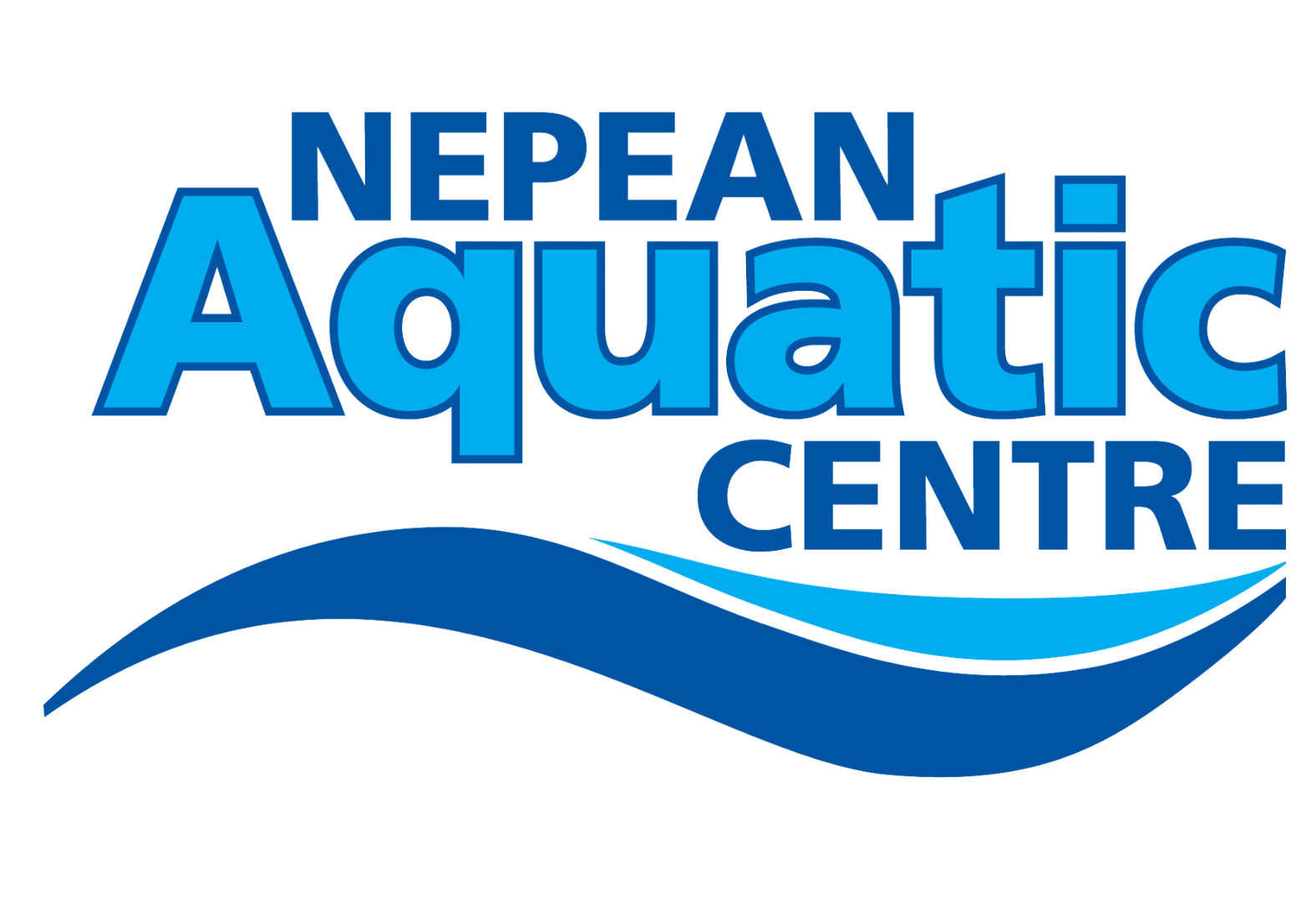Safety in Natural water ways
Bents Basin is a beautiful natural swimming spot that many of us have enjoyed with our families. It was so tragic to hear of the little boy who lost his life there last weekend.
At the time of writing, it has been reported that the boy was pulled unconscious from the water at Bents Basin approximately 5.15pm on Saturday 1 February 2025. Members of the public performed CPR until NSW Ambulance paramedics arrived and took over. The boy was treated at the scene before being taken to Westmead
Hospital in a critical condition, where he later died.
Despite their beauty, rivers and creeks and natural waterways claim more lives each year than any other waterway in Australia. The flat, still surface of an inland waterway can give a false sense of security and even seemingly tranquil waterways can prove to be dangerous. It is worth remembering that conditions in rivers can change rapidly. Just because you might regularly visit an area, it doesn’t mean the environment will be the same the next time you visit. For example, sandbanks can move, and weather can adversely affect water conditions suddenly.
To make matters worse, inland waterways are not patrolled by lifeguards, and should you get into trouble, there may be no one around to help, so it is incredibly important to understand the hazards and risks involved to keep yourself and those with you safe.
Whether you’re swimming, boating or even just relaxing on the bank, there are many hidden dangers that you may not be aware of:
1. Simple safety measures can make all the difference. Please ensure you take a phone with you and actively supervise children at all times.
2. Never swim alone, and don’t overestimate your swimming ability, or underestimate the dangers in rivers.
3. Check for submerged objects and fast flowing water. Wear a lifejacket, avoid alcohol and drugs around water
The images published with the story of this terrible tragedy of an abandoned picnic and paddleboards are haunting. A lovely sunny family day out should not end this way. Every drowning is a person, not a statistic, and every drowning means so many lives will be immeasurably and irrevocably altered.
Bents Basin is far too close to home. Our thoughts are with the family and the community at this sad time
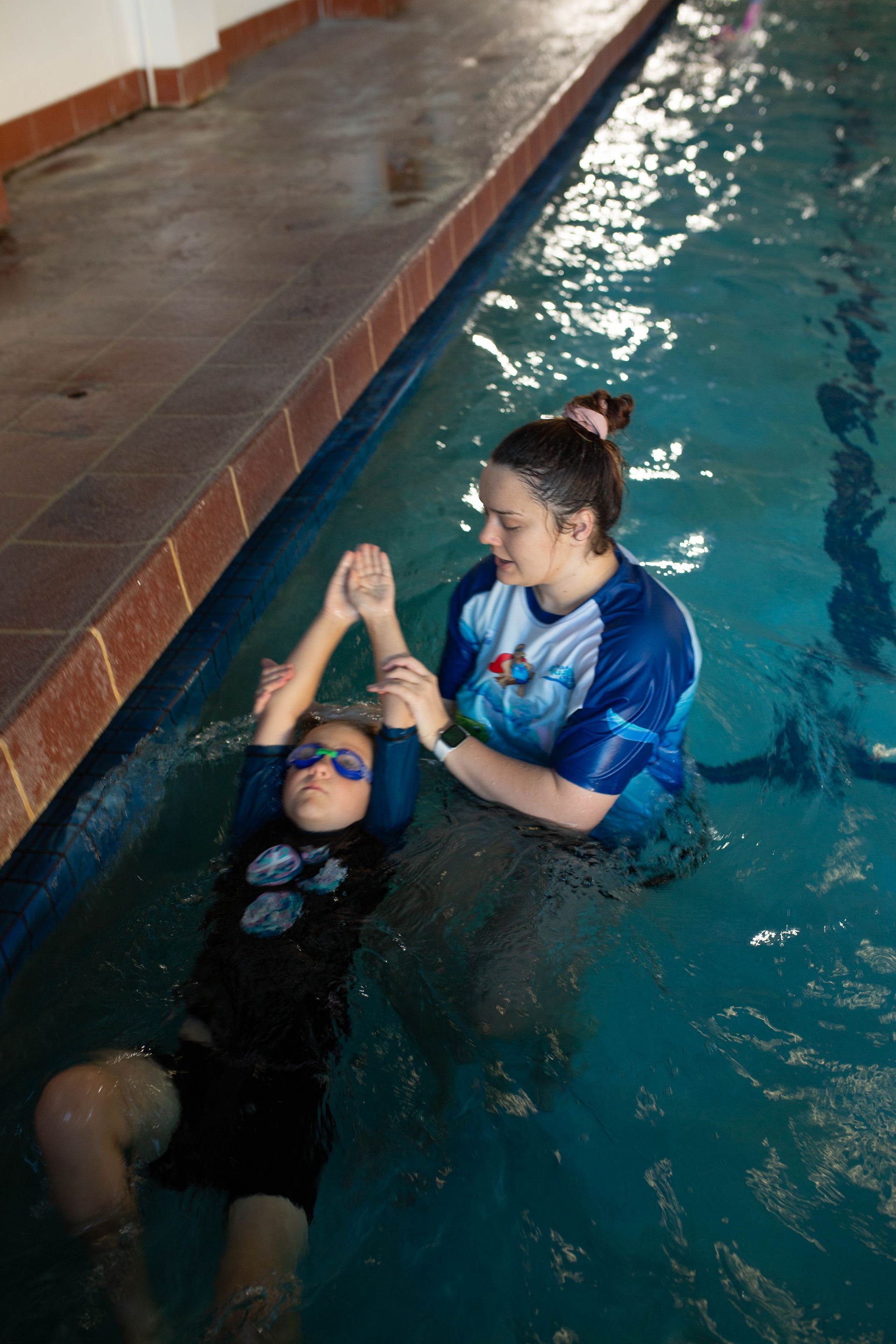
Every year the end of summer comes up far too quickly and I find myself urging everyone to just keep swimming – all year round! Why? Because…….. You can swim all year round: as much as I love being outside in the summer enjoying the fresh air, sunshine, and water, there is nothing better than a swim in a heated pool followed by a hot shower in the cooler months to refresh and energise you during the day time, or relax you ready for sleep in the evening. Swimming is low impact: whether your discomfort is from injury or ageing, your muscles and joints are cushioned in the water, supported but also met with resistance as you swim or work out. When injured, modified swimming is the perfect way to burn calories and stay toned. Swimming is an excellent calorie burner: Just 30 minutes of exercise in water is the equivalent of approximately an hour’s non-water exercise, and you even continue to burn calories even when you’ve gotten out of the pool! Swimming makes us happy: Swimming can help improve mental well-being, reducing tension, anxiety, depression, anger, confusion and increasing energy levels. Due to the use of large muscle groups and the endorphins released, swimming always makes me feel better, physically and mentally. But overall - swimming is for everyone: from birth to the very end, swimming is an activity that enhances a person’s life at every age and stage. Once you know how to swim, it’s a skill you can use for a lifetime, in so many settings. Swimming brings families together: whether its bonding with your baby during swimming lessons, enjoying the beach or poolside at home or on holidays, or supporting your competitive swimmer at meets, swimming time is often family time (especially as electronic devices and water don’t mix!) Most importantly……….. swimming can save your life. That’s it. The bottom line. Improved water safety is the number one reason why I love to swim, will continue to swim regularly, all year round, and encourage others to do so too! Interested on our School Holiday Intensive Swim Lessons and Paddles Super Swim camps to build your child’s swimming and water safety skills and confidence? Click the links for more details! We are offering a Special Offer in March for Western Weekender readers - get your first lesson free upon enrolment! The offer is applicable for all new enrolments and re-enrolments, at both Nepean Aquatic Centre and Eva Borys Swim School, and all enrolment T’s and C’s apply. Just mention the Western Weekender to get your First lesson free and enrol with us today. Until next time, stay safer! Love to Swim, Swim for Safety, Swim for Life!
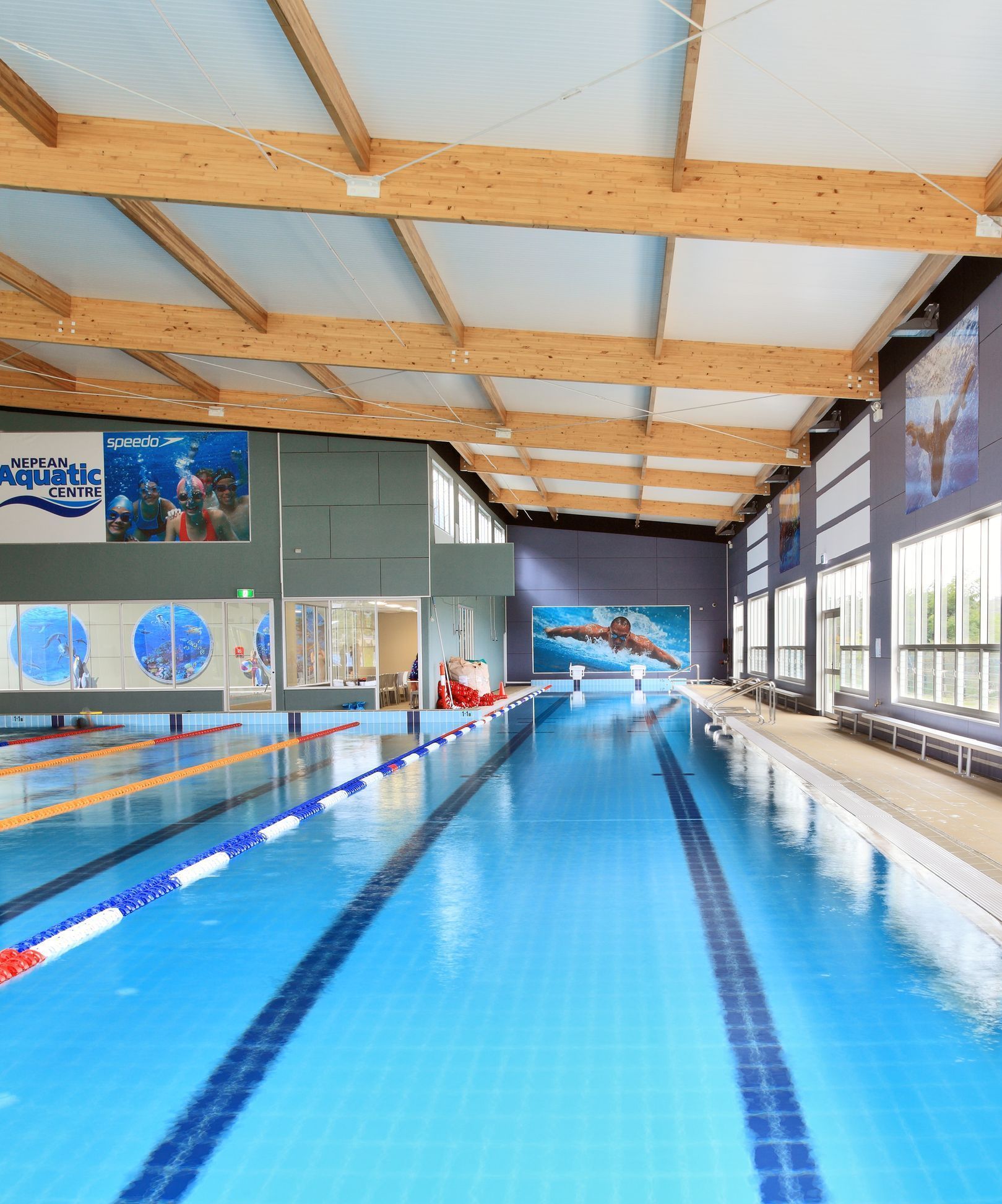
Since 2011 we have taught thousands of local people to swim at Nepean Aquatic Centre! Whether you're a child or an adult, mastering the art of swimming offers numerous benefits that extend far beyond the water's edge. To mark this milestone, here are fourteen compelling reasons why learning to swim should be on everyone's to-do list: Water Safety: Drowning is one of the leading causes of accidental death in Australia, especially in the 0-5 age group. Learning to swim significantly reduces the risk of drowning, equipping individuals with the skills needed to navigate water safely. Confidence Boost: Mastering swimming strokes and techniques instils confidence in individuals, both in the water and in daily life. Physical Fitness: Swimming is an excellent full-body workout that improves cardiovascular health, builds muscle strength, and enhances flexibility, all while being low-impact on the joints. Stress Relief: Being in the water has a calming effect on the mind, reducing stress and promoting relaxation. Social Opportunities: Swimming opens doors to social activities such as water sports, swim clubs, and group fitness classes, providing opportunities to meet new people and make friends. Life-Long Skill: Once learned, swimming is a skill that can be enjoyed throughout one's lifetime, from childhood into old age. Safety Around Water: Knowing how to swim enables individuals to enjoy water-based activities such as boating, snorkeling, and kayaking safely. Improved Coordination and Balance: Swimming requires coordination between various muscle groups and helps improve balance and spatial awareness. Burns Calories: Swimming is an efficient calorie-burning exercise that aids in weight management and contributes to a healthy lifestyle. Therapeutic Benefits: Water therapy, including swimming, is used to rehabilitate injuries, alleviate chronic pain, and improve overall well-being. Rescue Skills: Learning to swim not only protects oneself but also enables individuals to potentially save others in water-related emergencies. Boosts Mental Health: Swimming releases endorphins, the body's natural mood elevators, which can help combat depression, anxiety, and other mental health issues. Summer Enjoyment: Being proficient in all aquatic environments ensures enjoyment during our hot summer months, whether at the beach, pool, or water park. And an incredibly important reason…………..It’s Fun! To celebrate our birthday we are offering a Special Offer in March for Western Weekender readers - get your first lesson free upon enrolment! The offer is applicable for all new enrolments and re-enrolments, at both Nepean Aquatic Centre and Eva Bory's Swim School, and all enrolment T’s and C’s apply. Just mention the Western Weekender to get your First lesson free and enrol with us today. Love to Swim, Swim for Safety, Swim for Life!
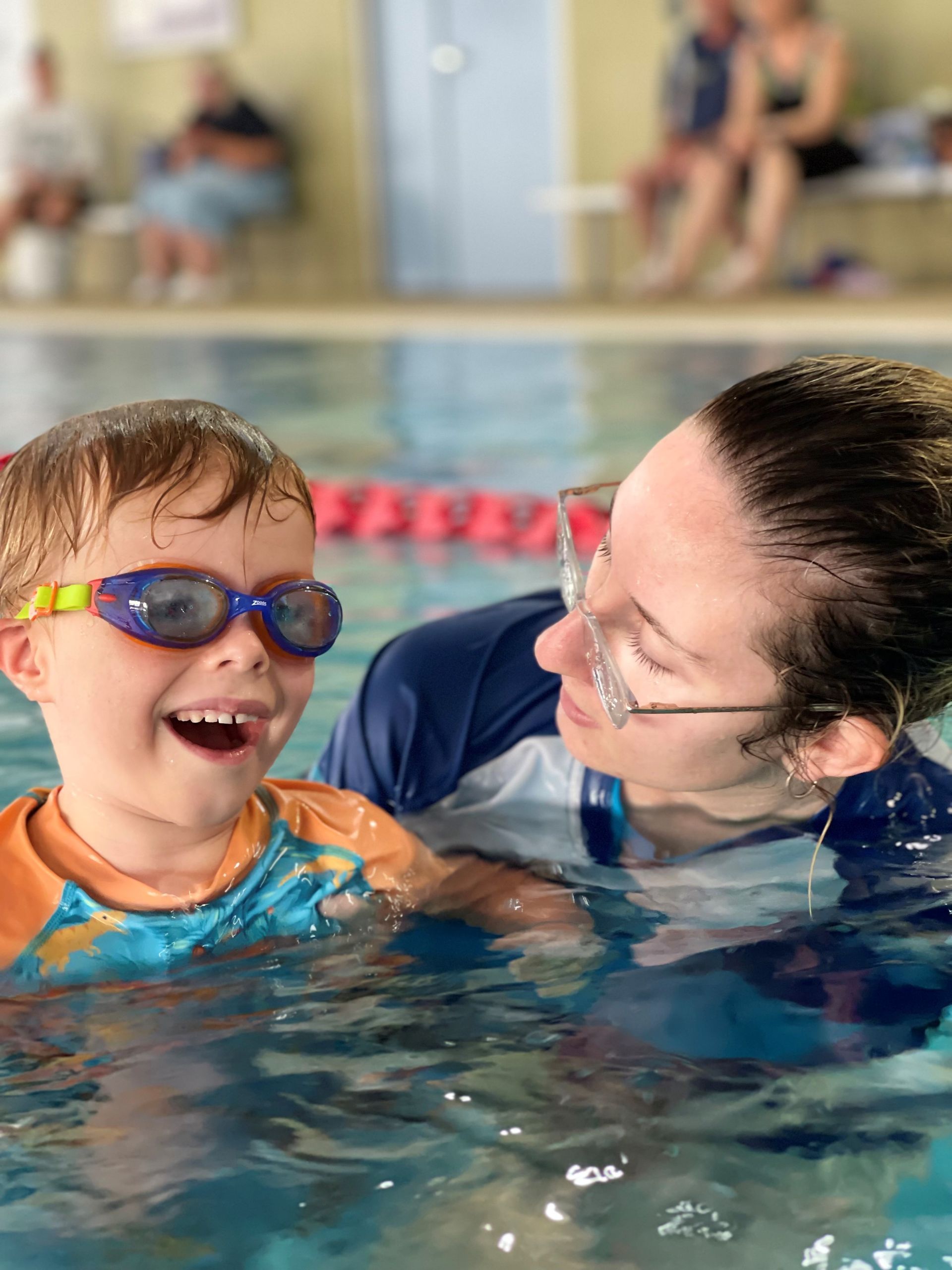
Every year the end of summer comes up far too quickly and I find myself urging everyone to just keep swimming – all year round – for so many reasons………. You can swim all year round: as much as I love being outside in the summer enjoying the fresh air, sunshine, and water, there is nothing better than a swim in a heated pool followed by a hot shower in the cooler months to refresh and energise you during the day time, or relax you ready for sleep in the evening. Swimming is low impact: whether your discomfort is from injury or ageing, your muscles and joints are cushioned in the water, supported but also met with resistance as you swim or work out. When injured, modified swimming is the perfect way to burn calories and stay toned. Swimming is an excellent calorie burner: Just 30 minutes of exercise in water is the equivalent of approximately an hour’s non-water exercise, and you even continue to burn calories even when you’ve gotten out of the pool! Swimming makes us happy: swimming can help improve mental well-being, reducing tension, anxiety, depression, anger, confusion and increasing energy levels. Due to the use of large muscle groups and the endorphins released, swimming always makes me feel better, physically and mentally. Swimming is great fitness training: alongside other sports, for strength, stamina and mobility – who wouldn’t want that competitive edge out on the sporting field! But overall, swimming is an activity that enhances a person’s life at every age and stage. Once you know how to swim, it’s a skill you can use for a lifetime, in so many settings. You can try snorkelling, playing water polo, participating in water aerobics, swimming in a triathlon, or scuba diving – and demonstrate a level of comfort and enjoyment in the water that inspires your family, including your children, to do the same. Swimming brings families together: whether its bonding with your baby during swimming lessons, enjoying the beach or poolside at home or on holidays, or supporting your competitive swimmer at meets, swimming time is often family time (especially as electronic devices and water don’t mix!) Most importantly……….. swimming can save your life. That’s it. The bottom line. Improved water safety is the number one reason why I love to swim, will continue to swim regularly, all year round, and encourage others to do so too! To make it even easier to swim with us all year round, we are offering a Special Offer in March for Western Weekender readers - get your first lesson free upon enrolment! The offer is applicable for all new enrolments and re-enrolments, and all enrolment T’s and C’s apply. Just mention the Western Weekender to get your First lesson free and enrol with us today . See you soon at the pool.
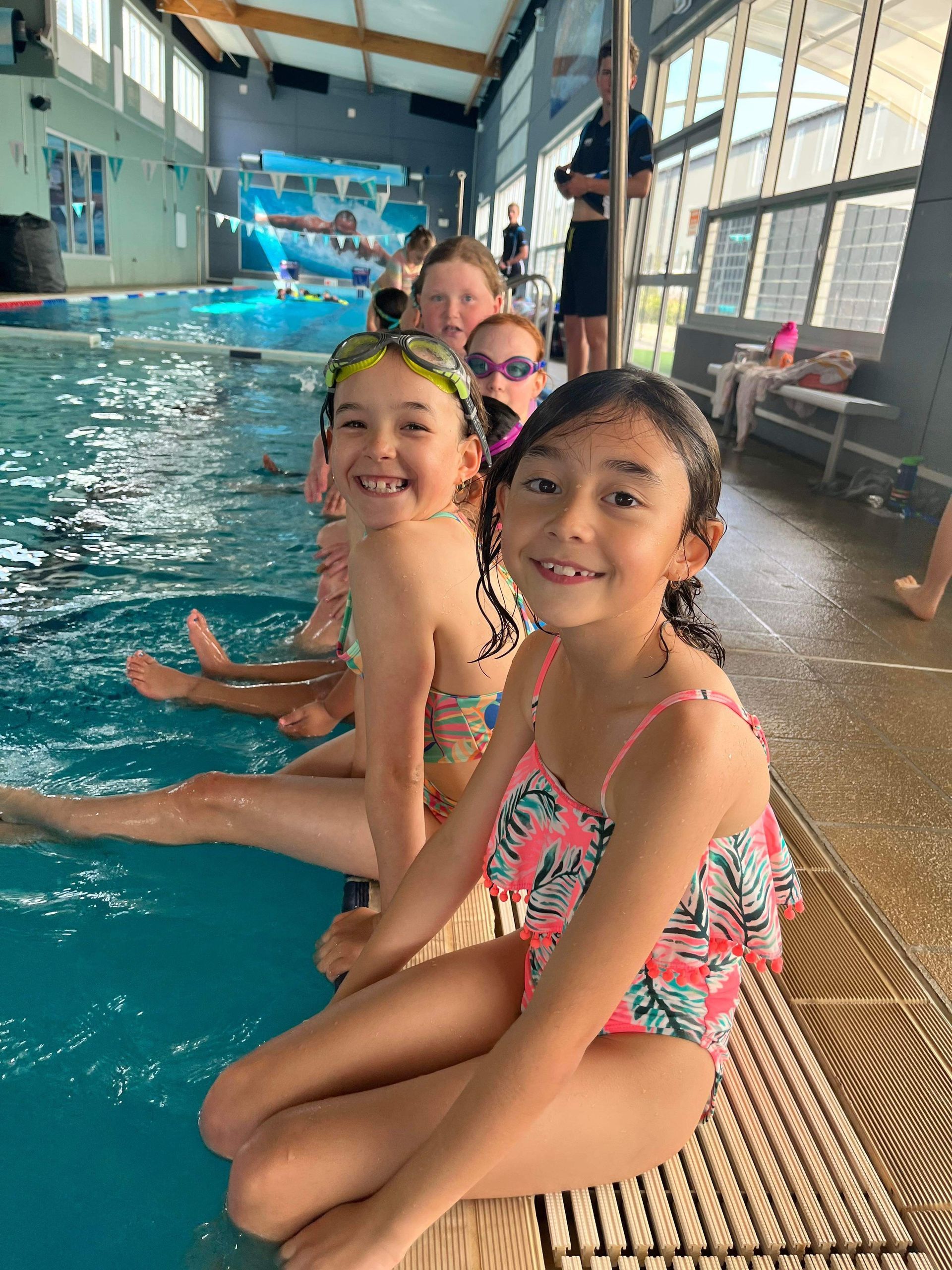
A Royal Lifesaving Australia report suggests that one year old children are statistically at the greatest risk of drowning in Australia, with the risk of drowning tripling after a child's first birthday. "Parents and carers need to know that the risk of drowning triples as soon as a child starts to crawl, peaking shortly after a child's first birthday," Royal Lifesaving CEO Justin Scarr said. The importance of swimming lessons cannot be underestimated. The sooner a child can turn themselves around after a jump or fall into the water and return to the side, the safer they will be. We understand how busy parents are and that morning or weekend Water Babies lessons may not suit all families, especially families who also have older children in afternoon swimming lessons, which is why we this week introduced afternoon Water Babies swimming lessons at Nepean Aquatic Centre. Our Water Babies program teaches young babies and children games and exercises that teach them when to jump into the water, when to hold their breath and to either turn over and float or paddle back to the side and hold on, or to pull themselves out. This is absolutely crucial to a child’s water safety. Lessons also teach children to wait their turn, and not to enter the water until invited to do so with an adult, an important skill when by the pool at home. The Australian Bureau of Statistics lists drowning as the number one cause of accidental death in children under 5. Royal Life Saving said "almost all" drowning deaths in children under 5 were due to lack of adult supervision, with most of the deaths a result of a fall into the water. Mr Scarr said "We can't emphasise enough how important active adult supervision is in preventing these deaths. Distractions are dangerous - whether it is taking a phone call, browsing social media or ducking inside to grab something - we ask parents and carers to always keep watch. In addition, it is essential that people install pool fences and check pool gates regularly to make sure they are not faulty or kept propped open." Royal Life Australia recommends that children 0-5 should be within arm’s reach of a supervising adult at all times when around water. We run water Babies swimming lessons 7 days a week. Interested in afternoon Water Babies lessons? Visit our Water Babies page or give us a call .
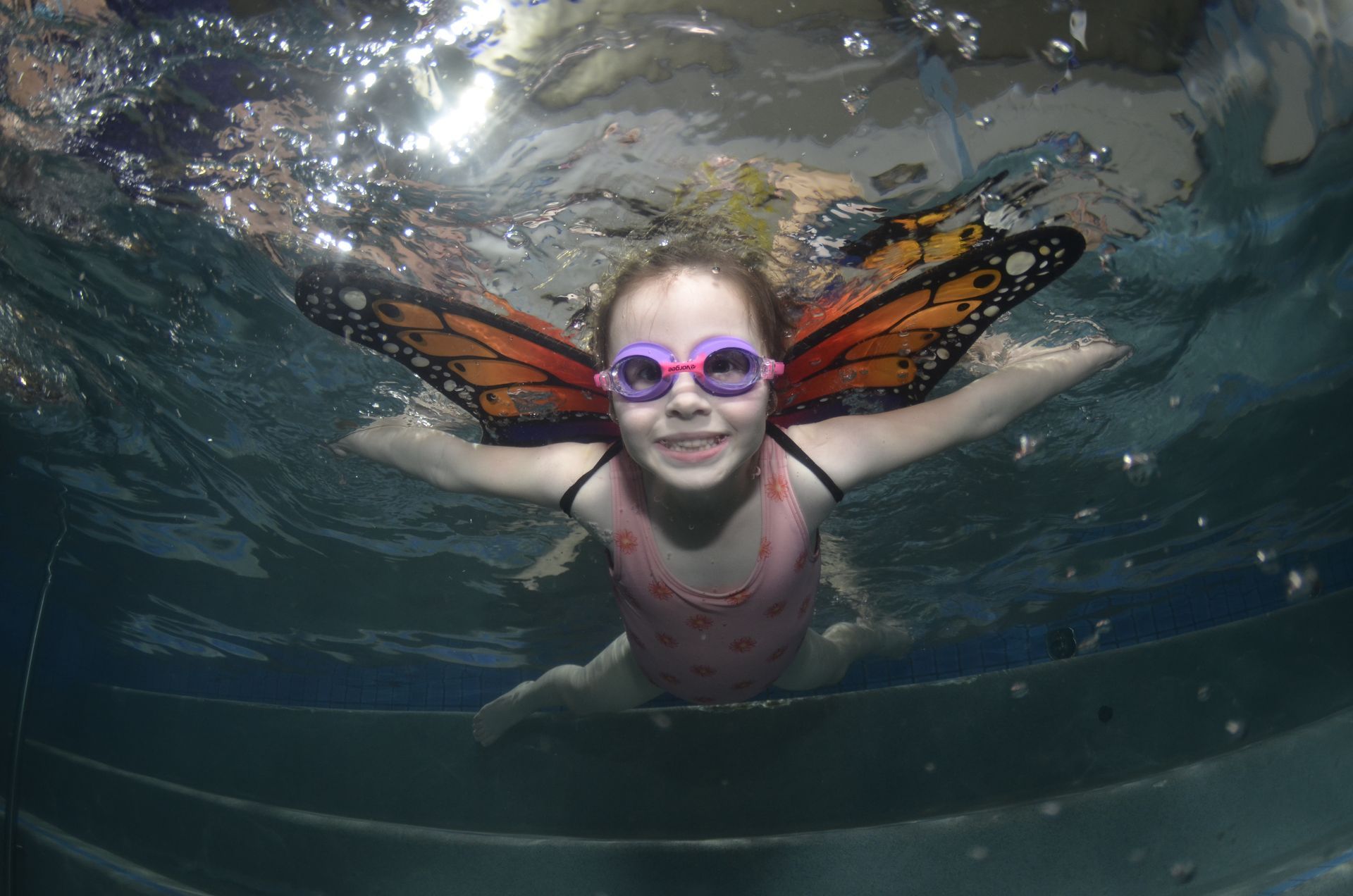
We’d like to introduce you to Aubrey! Aubrey began her swimming journey at just one year old in our Water Babies program. Living locally, Aubrey’s parents recognised the importance of their children learning to swim from a young age. Water is such an integral part of Australian life, so Aubrey’s parents wanted their kids to be safer and more confident in the water. Aubrey’s early days in the pool weren’t always easy, with plenty of tears and uncertainty in the water at first, especially when it came to floating on her back (as is the case with many of our little students). However, with time and patience and the guidance of our fantastic instructors like Julie and Jodie, Aubrey's confidence grew, and she soon learned to swim independently in our Learn to Swim program. Fast forward to today, and Aubrey, now 7, has recently graduated from the Dolphins level and is now perfecting her stroke technique at Sharks level. Aubrey’s love for the water, fostered by her instructors, is a testament to how consistent swimming can build comfort and skill in the pool. We believe that learning to swim is important for everyone, no matter their age. We’re incredibly proud of Aubrey’s progress and wish her all the best as she continues her swimming journey with us. Love to Swim, Swim for Safety, Swim for Life.
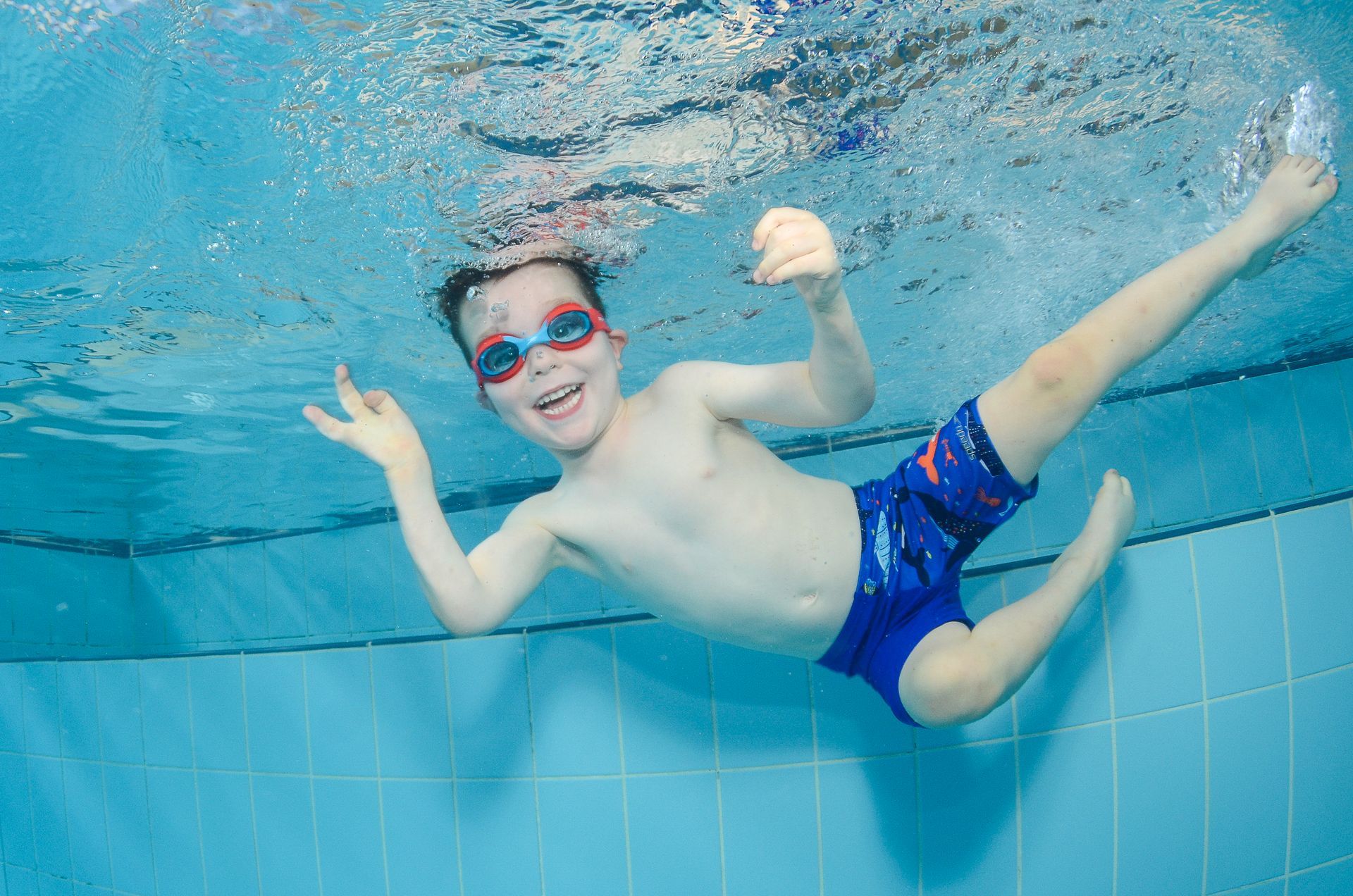
Schools are back for 2025 next week……..which means it’s time to get back into the routine of school and after school activities. Here’s yet another reason to prioritise children’s swimming lessons - did you know that children who are learning to swim also do better at school? A study conducted by Griffith University suggests that swimming children are not only safer, but smarter. The research conducted over four years concluded that children who swim demonstrate more advanced cognitive and physical abilities than other children and indicates that swimming children have many advantages when starting school. Lead researcher Professor Robyn Jorgensen said "While we expected the children to show better physical development and perhaps be more confident through swimming, the results in literacy and numeracy really shocked us. The children were anywhere from six to fifteen months ahead of the normal population when it came to cognitive skills, problem solving in mathematics, counting, language and following instructions." In addition to achieving physical milestones faster, the swimming children scored significantly better in visual-motor skills such as cutting paper, colouring in and drawing lines and shapes. Professor Jorgensen added "On average, these children were eleven months ahead of the normal population in Oral Expression, six months ahead in Mathematics Reasoning and two months ahead in Brief Reading. Most amazing was the difference in Story Recall (17 months ahead) and Understanding Directions (20 months ahead)." We have some morning swimming lesson places opening up at both of our centres this month as our preschoolers go off to kindergarten, so now is the perfect time to book your baby, toddler or preschooler into weekday morning lessons. Mornings are very focused on young children, with no school aged children in the centre, and set your child up for a good lunch and afternoon rest after the exercise and mental stimulation swimming lessons provides. Many children and parents will also experience their first school swimming carnival in the coming weeks. Encourage your child to take the plunge - a high student participation rate makes for a fun and exciting day for all, and with the number of children reaching the fifty meters freestyle swimming milestone declining, it is sad to see less competitors in these races each year. Good luck to all and race well. If your children are not yet in swimming lessons, make this your year to start their swimming journey and begin to work towards the recommended swimming milestones!
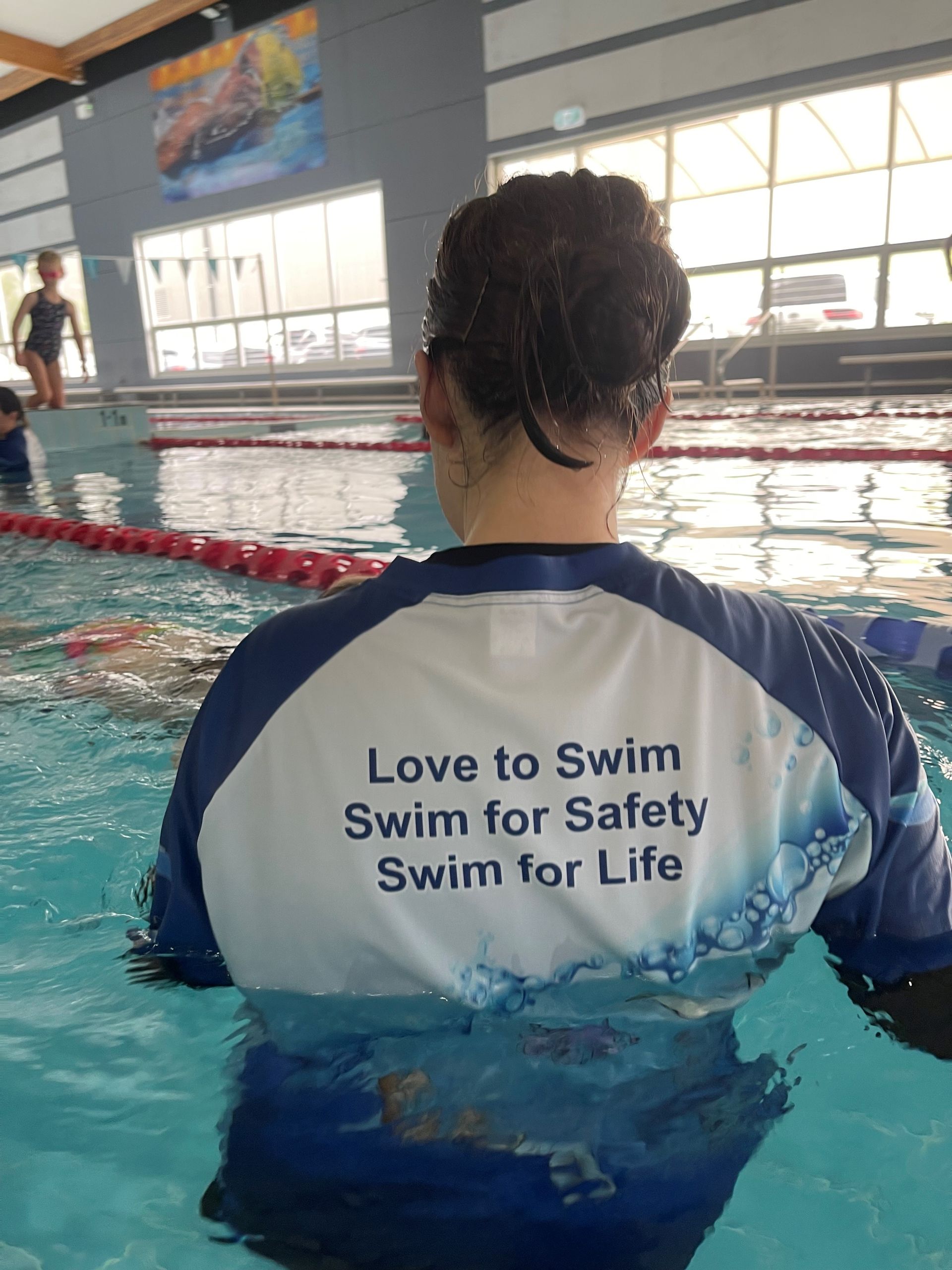
The Christmas tree is well and truly packed away, however we still have a few weeks of summer holidays remaining before children return to school and the usual day to day family routine recommences, plus Australia Day and many more weekends before summer is over. Which means there are lots of opportunities remaining for time to be spent by the pool, at the beach, and in and around our waterways – which also means the potential for more drowning tragedies to occur. At least 1 person drowned every day during last summer, 10 per cent of which were children aged 0– 14 years. Royal Life Saving Australia research shows a consistent peak in drowning cases during the summer months, with the deadliest time being between Christmas and New Year, and December and January recording the highest numbers of drowning deaths. Public Holidays are also heavily represented in stories of drowning. In an effort to understand the increased risks at this time of year Royal Life Saving Australia annually compiles drowning data in real time from the 1 st December to the end of February. This year’s data from 1st December 2024 to date paints a concerning picture. 66 drowning deaths have been recorded in Australia since December 1 st, an increase of 4 cases as compared to this time last year (62 recorded) and increase of 12 cases on the 5 year average (54). This years recorded drownings were across all age groups, states, and locations, including the beach, rivers, lakes and swimming pools. No one is immune to drowning. There are many reasons for the increased number of drowning deaths during this period, including holiday time to spend recreating, warm temperatures, over crowding at popular locations, alcohol consumption, lack of supervision, lack of adequate swim skills, rip currents, rough ocean conditions and other natural hazards, just to name a few. Drowning is preventable! This Australia Day weekend please focus on your families swim safety when around water by supervising children at all times, ensuring all pool fences and gates are secure and self latching, using safety equipment such as life jackets when boating or participating in other water activities, swimming between the flags and following all instructions from lifeguards at the beach, being mindful of hazards when swimming in natural bodies of water such as the ocean, rivers or lakes, and never consuming alcohol before swimming or swimming alone. Of course, swim skills remain vitally important all year round so if you or any member of your family has not yet learnt to swim, please make this a priority in 2025! Have a happy and safe Australia Day!
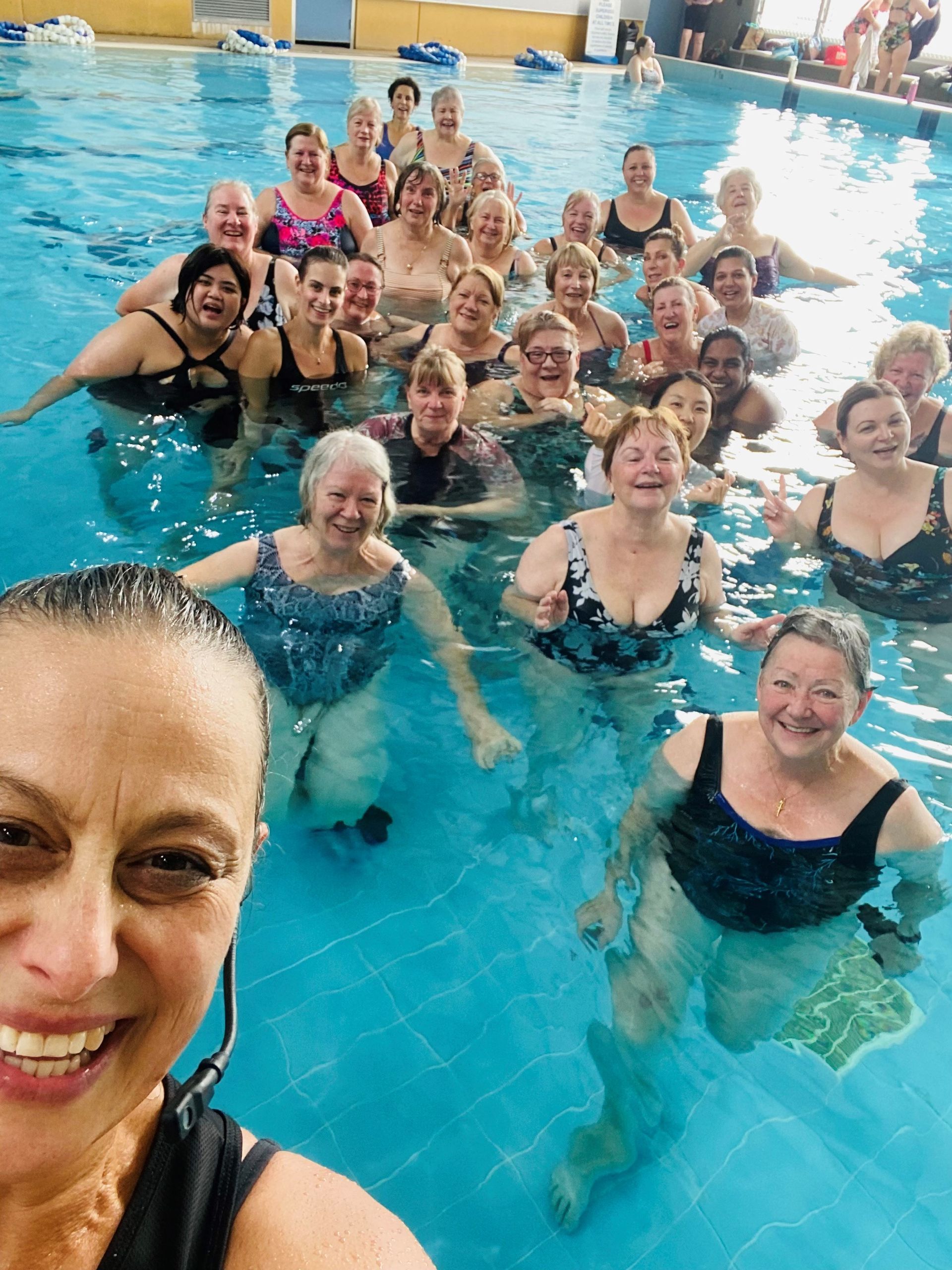
The silly season is over and its time to get back into routine, including regular exercise (especially if this was one of your New Years resolutions)! Why not combat the after effects of the festive celebrations this year by adding exercise to your post-Christmas To Do list? Regular exercise is incredibly important for both physical and mental health and wellbeing, but running, going to the gym or group sport isn’t for everyone, particularly if you have mobility issues of any type. Water exercise is a perfect place to start for many of us. Water is 15 times more resistant than air, so many people use water resistance training when injured to maintain their cardiovascular fitness with less impact and stress on joints, bones, and muscles due to the buoyancy of water. The support provided by the water also makes it an ideal environment for post workout recovery and stretching, and provides relief for sufferers of arthritis, back pain, heart disease, obesity, fibromyalgia, or multiple sclerosis. Aquarobics isn’t just for the oldies as it has sometimes been perceived but can be a highly challenging and effective workout. Aquatic exercise is one of the most effective ways to train whilst putting less stress on the body and increasing your range of motion, regardless of your age, gender or fitness level! We offer a range of classes in both shallow and deep water for all ages, plus gentle classes for seniors or rehab, and options for pre and post natal women, with a group of fun and friendly instructors. The beauty of Aquarobics is that you can work at your own pace, and that the exercise is low impact, so much kinder to knees, hips, backs and ankles. Just as importantly – it’s set to music, is great fun, mood boosting, non intimidating and very social – providing wonderful benefits for both body and mind! Grab a friend and come and join us to see what all the fuss is about. But I warn you – Aquarobics is addictive! Just ask the participants who have been coming along for 5, 10 and in some cases 20 years………! Lap swimming is the ultimate all-in-one exercise, working most muscles in the body with every stroke, increasing flexibility and muscle endurance. Muscles are strengthened and toned as a result of water resistance, core strength is improved, and the nature of breathing whilst swimming promotes greater lung capacity. We offer squad swimming, or Kids Swim 4 Fitness as an alternative for children and teenagers who like to swim purely for fitness, without the training schedule and competitive aspect that comes with squads. Joining a local swim club is a great way to swim to swim, race and socialise with other fans of swimming, and membership is open to both competitive and social swimmers. Whichever option you choose, please observe basic swim safety and enjoy your water workouts this summer. See you next week.
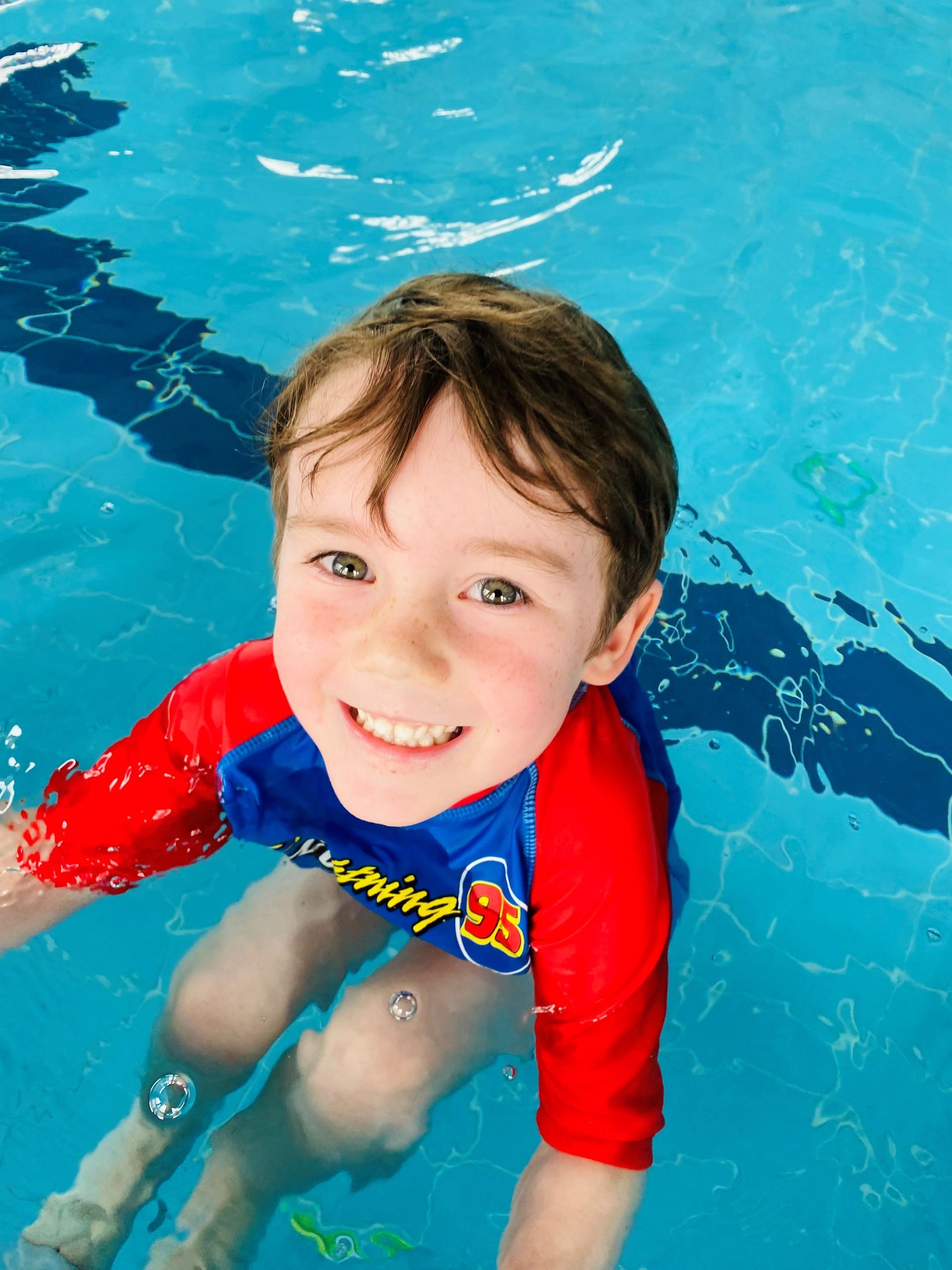
How are your New Years Resolutions going in the lead up to Christmas and New Years Eve 2024…..? Maybe this year we could all commit to some Water Safety resolutions, and to implementing them all year round? Supervise – Keep Watch! A lapse in adult supervision was the major risk factor in 100% of all toddler drowning deaths last year, and drowning remains the number 1 cause of accidental death in children under 5, with most deaths in this age group occurring in backyard pools. Don’t be distracted when with children around water - nothing is more important than their safety. Put the phone down and enjoy this precious time in the sun. Never assume someone else is watching. Learn To Swim. Every water safety education programme has a common message – learn to swim – from babies to children to adults. It is a proven fact that swimming lessons save lives. The sooner your child can get safety back to the edge of the pool unaided, the better. Make this year your year to get your kids into lessons, and to learn yourself if required. Fence the pool & shut the gate. Accidental falls into water remain the leading activity prior to drowning among children under five. Check the fence is safe and cannot be climbed, and that the pool gate is self latching. Barriers provide an important extra layer of protection but are never a substitute for constant adult supervision. Watch your mate – don’t let your mates drink and drown. The message is simple: wear a lifejacket when on the river, avoid consumption of alcohol and drugs around water, know your limits, don’t take any risks, and never swim alone. Respect the river. We are very lucky to live so near to the beautiful Nepean River and Penrith Beach, however the flat, still surface of an inland waterway can give a false sense of security, and currents, undertows or submerged objects can prove to be very dangerous. Royal Life Saving Australia’s Respect the River education program has decreased river drownings by 18% since its inception in 2015, however we still have some way to go. Be aware of your location. Swim between the flags and in patrolled areas only at the beach, and be aware of any rip currents. Learn CPR and educate children about water safety. Would you know what to do in an emergency? If the answer is no, make it your resolution to learn CPR in 2025. Let’s all make 2025 a year to improve the swimming and water safety skills of all Australians and to see more local children reach all of the recommended swimming benchmarks, for lifelong safe and active participation in physical aquatic activities and recreation. If your children are not yet in lessons – please enrol them. If your children are learning to swim – keep them in lessons until they are truly competent. See you in 2025!


